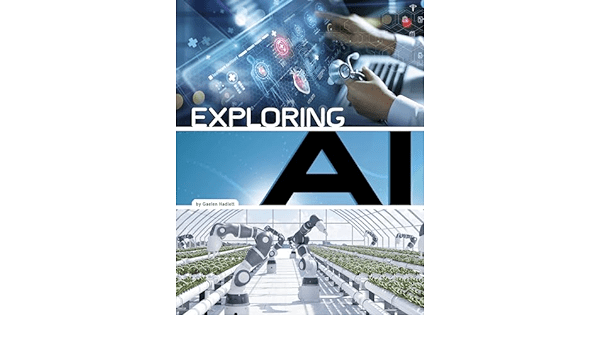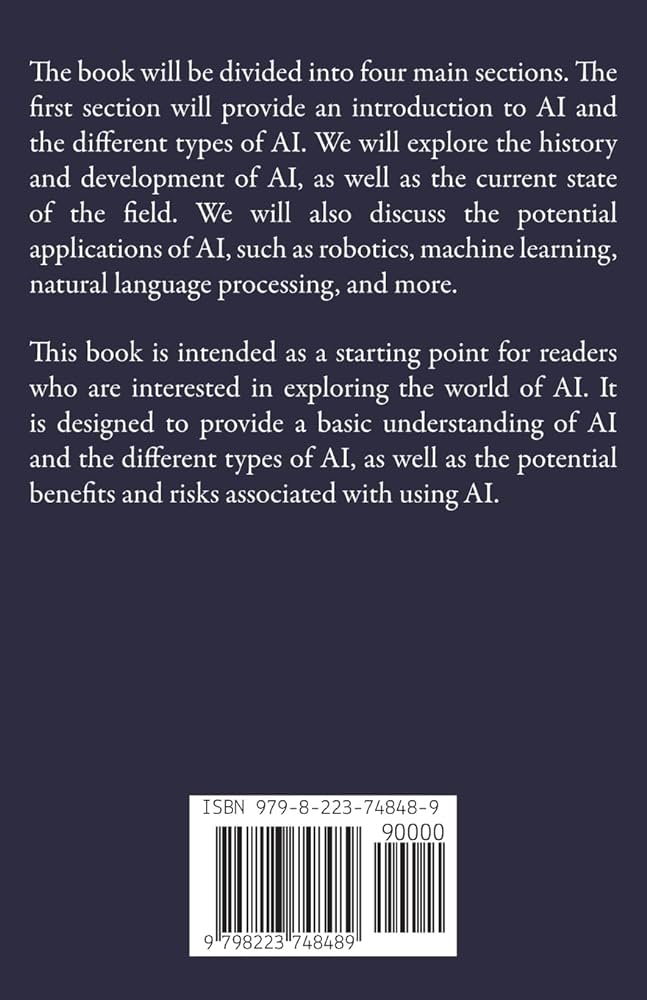Are you intrigued by the rapidly evolving world of Artificial Intelligence (AI), but feel overwhelmed by its complexity? Look no further! In “Exploring the World of AI: A Newbie’s Perspective,” we’ll take you on a fascinating journey into the realm of AI, with a friendly and accessible approach. Join us as we navigate through the fundamental concepts, potential applications, and the incredible impact AI is having on various industries. Whether you’re a curious individual or a beginner in AI, this article aims to demystify the subject and ignite your interest in this captivating field. Get ready to embark on your AI adventure!
What is Artificial Intelligence?
Artificial Intelligence (AI) refers to the simulation of human intelligence in machines that are programmed to think and learn like humans. It involves developing computer systems that can perform tasks that would typically require human intelligence, such as visual perception, speech recognition, decision-making, and problem-solving.
Definition of AI
AI is a branch of computer science that emphasizes the creation of intelligent machines that can work and react like humans. It involves the development of algorithms and models that allow computers to analyze and interpret data, learn from it, and make informed decisions based on the acquired knowledge.
Different types of AI
There are different types of AI, each serving different purposes and levels of complexity. The two main categories of AI are:
-
Narrow AI: Also known as Weak AI, this type of AI is designed to perform specific tasks or functions, such as voice assistants or image recognition. Narrow AI systems are focused on solving a particular problem and are trained with a predefined set of data.
-
General AI: Also referred to as Strong AI or Artificial General Intelligence (AGI), this type of AI possesses human-like intelligence and is capable of performing any intellectual task that a human being can do. General AI has the ability to understand, learn, and apply knowledge to a wide range of activities.
Applications of AI
AI has found its applications in various fields and industries, revolutionizing the way we live and work. Some of the key applications of AI include:
-
Healthcare: AI is being used in medical diagnosis, drug discovery, patient monitoring, and personalized treatment plans. It helps in analyzing large amounts of patient data and identifying patterns that can aid in early detection and treatment of diseases.
-
Finance: AI is used in fraud detection, risk assessment, algorithmic trading, and customer service in the financial sector. It helps in detecting suspicious activities, optimizing investment strategies, and providing personalized financial advice.
-
Transportation: AI plays a crucial role in self-driving cars, route optimization, traffic management, and predictive maintenance. It helps in reducing accidents, improving efficiency, and enhancing the overall transportation experience.
-
Customer Service: AI-powered chatbots and virtual assistants are used to provide instant customer support, answer queries, and assist in making purchasing decisions. They can handle a large volume of inquiries simultaneously, providing 24/7 support to customers.
-
Manufacturing: AI is used in robotics and automation to streamline production processes, increase efficiency, and improve product quality. It enables machines to perform complex tasks with precision and adaptability.
History of AI
Early beginnings
The concept of AI dates back to ancient times, with philosophical debates on the nature of human intelligence. However, the modern era of AI began in the 1950s with the development of electronic computers. Early pioneers, like Alan Turing and John McCarthy, laid the foundation for AI research.
In 1956, the Dartmouth Conference marked the birth of AI as a formal discipline. Researchers aimed to develop machines that could mimic human intelligence through logical reasoning and problem-solving methods. This led to several breakthroughs in areas such as chess-playing programs and natural language processing.
The AI winter
Despite the initial enthusiasm and progress in AI research, the field experienced a period of setback in the 1970s and 1980s, known as the AI winter. Limited computational power, insufficient datasets, and unrealistic expectations caused a decline in funding and interest in AI.
During this time, AI research faced numerous challenges, and the technology failed to live up to the high expectations set by some pioneers. This led to a decrease in funding, skepticism from the scientific community, and a general feeling of uncertainty regarding the future of AI.
Resurgence and advancements
The AI winter eventually ended in the late 1990s with the emergence of new techniques and technologies. Increased computing power, availability of vast datasets, and advancements in algorithm design led to a resurgence of interest in AI.
Machine Learning (ML) and Neural Networks (NN) played a significant role in the revival of AI. ML allowed machines to learn from data and make predictions or decisions without being explicitly programmed, while NN enabled deep learning and improved pattern recognition.
With the help of ML and NN, AI applications started to gain traction in various domains, such as image recognition, speech synthesis, and natural language understanding. The field of AI is now experiencing unprecedented growth and is poised to shape the future of technology.

Key Concepts in AI
Machine Learning
Machine Learning is a subset of AI that focuses on the development of algorithms and models that enable computers to learn from data and make predictions or decisions without being explicitly programmed. It involves training a machine with a large amount of data to recognize patterns and make accurate predictions based on that knowledge.
Deep Learning
Deep Learning is a subfield of Machine Learning that utilizes artificial neural networks to learn and model complex patterns. It mimics the structure and functioning of the human brain, allowing machines to process and understand large amounts of data. Deep Learning has achieved remarkable results in areas such as image and speech recognition, natural language processing, and autonomous vehicles.
Neural Networks
Neural Networks are computational models inspired by the structure and functioning of biological neural networks in the human brain. These networks consist of interconnected nodes, or “neurons,” that process and transmit information. Each neuron receives input, performs calculations, and generates an output that can be used as input for subsequent neurons. Neural Networks are the building blocks of Deep Learning and have revolutionized AI research and applications.
Natural Language Processing
Natural Language Processing (NLP) deals with the interaction between computers and human language. It involves the development of algorithms and models that enable machines to understand, interpret, and generate human language. NLP is used in various applications, such as language translation, sentiment analysis, chatbots, and voice recognition.
Ethical Considerations in AI
Bias in AI algorithms
One of the ethical concerns in AI is the potential bias present in algorithms and the data they are trained on. If the training data is biased, the AI system may generate biased outputs, leading to unfair decisions or perpetuating social inequalities. It is crucial to address and mitigate bias to ensure that AI systems are fair, unbiased, and inclusive.
Privacy concerns
AI often requires vast amounts of data to train and improve its models. This raises concerns about privacy and the protection of personal information. It is important to establish rigorous data protection measures, including anonymization and encryption, to ensure that individuals’ privacy rights are respected and safeguarded.
Impact on the job market
AI has the potential to automate repetitive tasks and jobs, which may result in job displacement. However, it is important to note that AI also creates new opportunities and job roles. It is crucial to invest in reskilling and upskilling the workforce to adapt to the changing job market and ensure a smooth transition.
Role of humans and AI
AI should be viewed as a tool to augment human capabilities rather than replace them. Humans play a critical role in designing, training, and interpreting the outputs of AI systems. Collaboration between humans and AI is essential to harness the full potential of AI while maintaining human control and ethical responsibility.

Real-world Examples of AI
Virtual Assistants (e.g., Siri, Alexa)
Virtual assistants, such as Siri and Alexa, are AI-powered conversational agents that can perform various tasks based on voice commands. They can answer queries, set reminders, play music, provide weather updates, and even control smart home devices. Virtual assistants use NLP and machine learning algorithms to understand and respond to user requests.
Image and speech recognition
AI has made significant advancements in image and speech recognition. Image recognition algorithms are used in applications like facial recognition, object detection, and autonomous vehicles. Speech recognition technology enables machines to convert spoken language into text, facilitating voice commands, transcription services, and hands-free communication.
Self-driving cars
Self-driving cars are a prominent example of AI in the transportation industry. These vehicles use a combination of sensors, cameras, and AI algorithms to perceive and interpret their surroundings. AI enables self-driving cars to recognize obstacles, navigate through traffic, and make decisions to ensure a safe and efficient journey.
Robotics
AI plays a vital role in robotics by enabling machines to perceive and interact with the environment. Robots equipped with AI algorithms can perform tasks like assembly line operations, household chores, and medical procedures. AI allows robots to adapt to changing situations, learn from experience, and collaborate with humans effectively.
Medical diagnosis
AI has the potential to revolutionize the field of healthcare. AI algorithms can analyze medical images, such as X-rays and MRI scans, to aid in the diagnosis of diseases like cancer and detect abnormalities. AI-driven chatbots and virtual nursing assistants can also assist in triaging patients and providing personalized healthcare advice.
Benefits and Advancements in AI
Automation and efficiency
AI enables automation of repetitive, mundane tasks, freeing up human resources for more complex and creative work. Machines equipped with AI algorithms can perform tasks faster and more accurately, leading to increased productivity and efficiency.
Enhanced decision-making
AI systems can analyze vast amounts of data and generate insights, enabling informed and data-driven decision-making. AI algorithms can identify patterns, detect anomalies, and make predictions with a high degree of accuracy, assisting businesses and organizations in making strategic decisions.
Improved healthcare
AI has the potential to transform healthcare by improving diagnosis, treatment, and patient care. AI-powered systems can analyze medical data, genetics, and patient history to provide personalized treatment plans and recommendations. AI also aids in early detection of diseases, reducing the burden on healthcare systems and improving patient outcomes.
Personalization
AI enables personalized experiences by understanding individual preferences and tailoring recommendations accordingly. Online platforms and streaming services use AI algorithms to suggest relevant content, while e-commerce platforms use AI to personalize product recommendations based on customer browsing and purchasing behavior.
Security and fraud prevention
AI can help in enhancing security measures and preventing fraud. AI algorithms can analyze patterns of fraudulent behavior, identify anomalies, and raise alerts. AI-powered security systems can also detect potential cyber threats, monitor network activities, and provide real-time protection against attacks.

Challenges and Limitations of AI
Data quality and availability
AI algorithms require large amounts of high-quality data to train and improve their models. However, obtaining such data can be challenging, as it may not always be readily available or easily accessible. In some cases, the data may be biased or incomplete, which can affect the performance and reliability of AI systems.
Lack of transparency and interpretability
Some AI algorithms, especially those based on deep learning, can be perceived as “black boxes” due to their complex nature. It may be difficult to interpret and understand how decisions are made by these algorithms. Lack of transparency and interpretability can raise concerns regarding accountability, trust, and the ability to challenge or explain AI decisions.
Overreliance and trust in AI
While AI has made significant advancements, it is not infallible. Overreliance on AI systems without human oversight and verification can lead to errors or unintended consequences. It is essential to have safeguards in place to ensure that AI outputs are thoroughly reviewed and verified before making critical decisions.
Job displacement
The automation potential of AI raises concerns about job displacement and unemployment. As AI systems become more capable of performing tasks traditionally done by humans, certain job roles may become obsolete. It is crucial to invest in reskilling and upskilling programs to equip the workforce with the skills required in the AI era.
Hacking and adversarial attacks
As AI systems become more prevalent, they also become potential targets for hacking and adversarial attacks. Malicious actors can exploit vulnerabilities in AI algorithms to manipulate or deceive the system. Ensuring the security and integrity of AI systems is paramount to prevent unauthorized access and malicious usage.
The Future of AI
Predictions and speculations
The future of AI holds immense potential. Some predictions speculate that AI will continue to advance at an unprecedented pace, with breakthroughs in areas such as AGI, robotics, and healthcare. The development of AI systems that can understand and generate human-like language is also anticipated.
Potential risks and concerns
While AI offers numerous benefits, there are also potential risks and concerns that need to be addressed. These include the ethical implications of AI, potential job displacement, biases in algorithms, and the wider societal impact of AI. It is crucial to adopt responsible and ethical practices to mitigate these risks and ensure the responsible deployment of AI technologies.
Collaboration between humans and AI
Collaboration between humans and AI is expected to play a significant role in the future. AI systems can assist humans in decision-making, augment their capabilities, and provide insights that humans may not be able to generate on their own. Humans will continue to provide the necessary context, moral values, and oversight in the development and deployment of AI systems.
Ethical guidelines and regulations
As AI technology progresses, it is crucial to establish ethical guidelines and regulations to ensure that AI is developed and used responsibly. These guidelines should encompass transparency, fairness, privacy, and accountability. Governments, organizations, and the AI community need to work collaboratively to define and enforce these guidelines.

Getting Started with AI
Learning resources and courses
Several online platforms offer courses and resources to learn AI concepts and techniques. Websites like Coursera, edX, and Udacity provide introductory courses on AI, Machine Learning, and Deep Learning. These courses cover the fundamentals and provide hands-on experience with popular programming languages and frameworks used in AI.
Programming languages for AI
Python is widely regarded as the go-to programming language for AI and Machine Learning. It has a rich ecosystem of libraries and frameworks, such as TensorFlow and PyTorch, that simplify AI development and research. Other languages like R and Julia are also used for specific AI applications.
Building AI projects
To gain practical experience in AI, aspiring AI enthusiasts can start by taking up small projects. They can leverage existing datasets and frameworks to develop AI models for tasks like image classification, sentiment analysis, or recommendation systems. Building AI projects allows individuals to apply their theoretical knowledge and gain insights into the practical challenges of AI development.
Networking and AI communities
Joining AI communities and networking with professionals in the field can provide valuable insights and opportunities for collaboration. Online forums, social media groups, and AI-specific communities and conferences offer platforms for sharing knowledge, discussing ideas, and finding mentors. Engaging with the AI community can help newbies stay updated with the latest advancements and trends in the field.
Conclusion
In conclusion, Artificial Intelligence is a rapidly evolving field that holds immense potential to transform various aspects of our lives. From healthcare to transportation, AI is revolutionizing industries, enhancing decision-making, and improving efficiency. However, AI also poses ethical considerations, such as bias and privacy concerns, which need to be addressed. The future of AI is filled with both possibilities and challenges, making collaboration between humans and AI essential. Aspiring AI enthusiasts can begin their journey by exploring learning resources, gaining practical experience, and becoming part of the AI community. With a friendly approach, AI can be a fascinating and rewarding field to explore. So go ahead, dive into the world of AI and embark on an exciting journey of discovery and innovation.







Leave a Reply